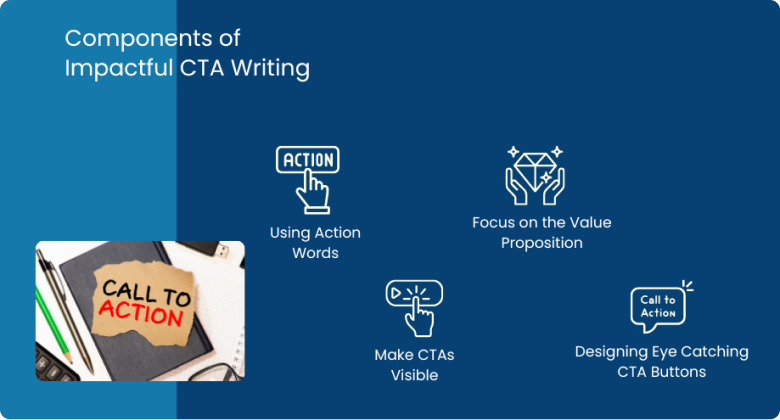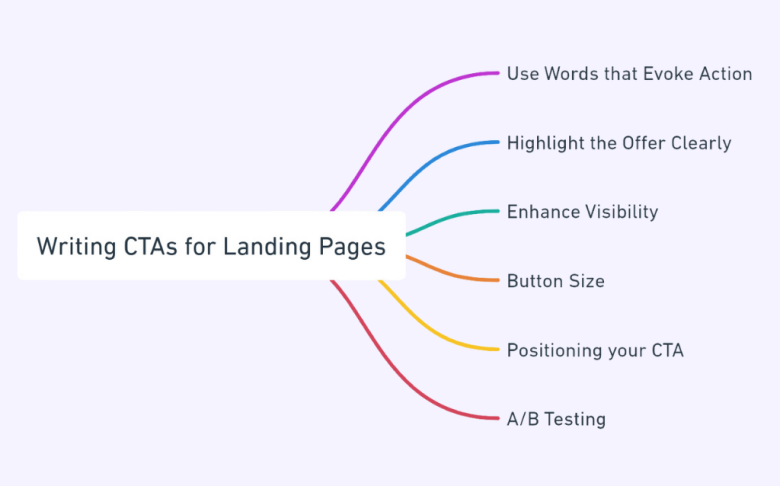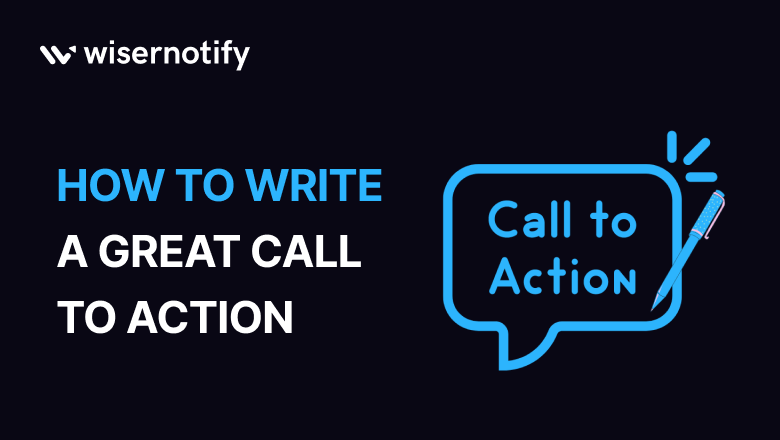As a business, you’re constantly striving to attract more audiences and influence them to take desired action. But is your content just telling them stories or lacking a substance that encourages visitors to take action?
To improve the interaction with visitors and make them act in a certain manner, you need to craft compelling calls to action designed to encourage users and visitors to take certain actions.
Maybe you want them to download an ebook, make a purchase, book a demo, or book a call with a salesperson. Either way to achieve your marketing goals, you need to write a super-effective CTA.
Whether you want to craft a landing page, blog post, social media post, web page, or other marketing materials, make sure it sparks curiosity among the visitors.
In this guide, we have listed various strategies to create a great call to action that encourages visitors to take a specific action.
Build trust & FOMO
Highlight real-time activities like reviews, sales & sign-ups.
Understanding the Basics of CTA Writing
The copy that you create for the CTA is the key element that drives the actions of your visitors, just like the colors, size, and shape of the CTA button.
Crafting an effective call to action is more than just a button; it’s about using powerful words to entice the minds of your prospects and take them to your door.
Components of an Impactful CTA Writing

1. Using Action Words
When you talk about the call to action, it makes sense to use action-oriented words, action phrases, and strong command verbs that prompt immediate action from the visitors. Make sure to build personal and meaningful conversations with your audience by
Here are a few call-to-action examples: “Reserve Your Spot,” “Discover Your Niche,” or “Talk to Us.” No matter what action you want users to take, action-oriented words can bring success and achieve marketing goals.
2. Make CTAs Visible
With the crafting of a strong CTA, understand that strategic placement is critical. You can’t place the CTA anywhere on your page and hope it influences the visitors; it needs to be put strategically to grab their eye and is easily visible to users.
For example, you can place the top of the page or above the fold, at the end of the quality content, or in the middle, which can remind visitors to take action. Ideally, you can also use a usability testing tool to test the placement with target users. This way, you will know for sure whether your CTA is visible or not.
3. Focus on the Value Proposition
Ensure your CTA promises value and benefits visitors will gain after responding or clicking on the button. Understanding your audience’s preferences and needs will enable you to directly speak to them and address the problem your audience is trying to solve.
For example, using words like “Risk-Free” or “Free test drive” can create a call to action that is more likely to evoke an emotional response and inspire them to take action.
4. Designing an Eye-Catching CTA Buttons
Now that you have crafted a compelling call to action button, it’s time to make it eye-catching and grab visitors’ attention. Here are a few tips for designing an eye-catching CTA button
Right Colors: Color psychology plays a significant role in influencing user behavior and evoking emotions among them. Use attention-grabbing colors that stand out from the rest of your site’s color scheme.
Appropriate Size and Shape: Make sure the CTA button is large enough to be noticed, and choose a shape that gives it a more professional appearance.
Contrasting Elements: Make your CTA button stand out using contrasting fonts, colors, and other elements that separate it from the other page. It helps you draw customers’ eyes and increase the likelihood of a click.
Utilize White Space: Make sure the area around the CTA button is blanked or unmarked, draw attention to your CTA, and make it easy to spot and click on it.
These are a few steps you can use to craft CTAs that effectively prompt user action and drive desired outcomes for your marketing campaign.
Let’s dive into ways to craft a strong CTA to attract customers.
How to Writing Impactful CTA for Different Platforms
Implementing the CTA button helps you drive conversions and capture valuable leads that can be converted into customers. It can help you improve sales and bring business growth by influencing the right audiences. Here are tips and tricks on how to write a call to action for different platforms
Writing CTAs for Landing Pages

Landing pages are specialized web pages that can be key to unlocking the potential of your business and improving conversion rates. But along with an eye-catching Landing page, you need to craft an eye-catching CTA that compels users to take action.
- Use Words that Evoke Action: Your landing page should prompt immediate action from visitors through its call to action; make sure the content is short, simple, and action words that encourage them to take action without hesitation. Incorporate urgency with words such as “Limited Time Offer,” “Act Now,” or “Don’t Miss Out.”
- Highlight the Offer Clearly: Clearly communicate the value proposition and express what users will benefit through clicking. Explain what’s in for them and why they should take action. Use personalized words like “You” and “Me” to instill trust among the visitors.
- Enhance Visibility: Select color, shape, and other visually appealing elements to make the CTA stand out from the other elements and content on the Landing page. Make sure it sharply contrasts the page background and draws the attention of the visitor.
- Button Size: The size of the button is a crucial aspect in determining whether or not it gets noticed by the user. Be sure that the landing page CTA is big enough to stand out to get easily noticed and click through.
- Positioning your CTA: The position of your CTA depends upon the design and layout of your landing page. Make sure to position the CTA where it gets more conversions and by testing your website with a heatmap.
- A/B Testing: Make sure to optimize and test different variations as well as positions of your CTA to see what resonates best with your audience and optimize for higher conversions.
These are some best practices on writing a great call to action for your landing page that effectively prompts visitors to take action and achieve marketing goals.
Writing CTA for Social Media
Before you start crafting CTA for your social media posts or ads like a Facebook ad, an Instagram ad, or other paid ads, make sure what you want your audience to do is visit your website and landing page, follow, share, or enter a contest. Make sure the action is aligned with your social media marketing strategy to achieve marketing goals.
- Use Catchy Hooks: If the content on the call to action doesn’t grab their attention, visitors might not take any action. Make sure the CTA answers them, “What’s inside for me?”
- Incorporate Brand Voice: People engage more with the brand they recognize, and CTA is an effective tool to showcase the brand’s personality and voice. Make sure the CTA shows a consistent brand voice across marketing channels.
- Persuasive Language: Use strong, action-oriented verbs and strong phrases that encourage users to take action and help you generate qualified leads. Words like “Subscribe Today to enjoy special offers,” “Get a Free guide,” or “Shop the best deals” can be clearer and more specific.
- Use Images: Adding visuals makes your CTA more persuasive and grabs the attention of users. Visuals can reinforce your message and make your post more engaging.
These are some best practices on creating a call to action for your social media posts that effectively prompt visitors to take action and achieve marketing goals.
Email Marketing: Crafting CTAs That Convert

CTA in “Email Marketing materials” encourages users to take specific actions, such as “Visit Our Page,” “Buy Now,” or “Learn More.” Email marketers can use CTA to drive their audience towards the desired action, like making a purchase, reading a blog, or posting a newsletter.
- Keep it Short and Straightforward: Make sure the CTA is clear and more relatable to the subscribers to drive them to take action. Highlight the value you want to offer them and aim for the message to be easily understood and actionable.
- Find the Strategic Location: Make sure to place your CTA where your subscribers or readers are convinced to take action.
- Personalization: Make your CTA resonate with your reader and their interests by aligning the tone and language with your brand voice and speaking directly compelling to their needs.
- Create FOMO: Use words that create a sense of urgency among the readers, influencing them to take immediate action, or they’ll miss a good deal if they don’t act fast.
- Catch the Reader’s eye: Even if you have written a good call to action, if your subscriber can’t see it, then it doesn’t matter. Make sure you use contrasting colors, appropriate size, proper placement, and blank spaces to make it easier for your audience or subscribers to see.
These are some best practices on how to write a call to action for your email marketing campaign that effectively prompts visitors to take action and achieve marketing goals.
Writing CTAs for Blog Posts
Your blog content would be valuable in building brand awareness and driving traffic for your brand website, but is the reader taking action after reading the blog? Adding call-to-action, you can instantly Convert visitors into new followers, new subscribers, and new customers that can bring you new business.
- Focus on Goals: Every blog content is used to market the business or designed to funnel in more leads. That means every blog content has different goals to achieve, so make sure the CTA aims to achieve them. For example, creating FOMO for more sales, asking them to subscribe to improve brand reputation, and many more.
- Focus on Offering Solutions: Make sure your blog content offers the solution to your target audience and unlead CTA that makes them take action.
- Make it Special: Don’t use the common CTA; make it relevant to your blog post. CTA examples that are more relevant, like “Show me my Dream Home” instead of “Show Me,” are a few calls to action examples than ordinary ones, or “Lose Weight within 30 Days” instead of “Visit our website.”
- Include Social Links: If your goal is to make your customers share your posts on social platforms or subscribe to your social channels, make sure you add the CTA that diverts them towards your social media platforms.
These are some best practices to craft the best call to action for your blog post that cut through decision confusion by giving your reader a direct command.
Build trust & FOMO
Highlight real-time activities like reviews, sales & sign-ups.
Importance of CTA for Online Businesses

When you run marketing campaigns, CTAs are crucial to tell readers or visitors what to do next. You might need to tweak the call to action depending on the goals you want to achieve and motivate audiences to take steps accordingly.
Drive more Sales: The main goal of your business is to drive more sales; a strong CTA can encourage visitors to take action and make a purchase, which leads to increased sales and revenue for your business.
Increases Conversion Rate: A good call to action can increase the chances of converting web visitors into customers. With a clear message and well-written call to action, visitors are more likely to take desired action.
Increase Engagement: CTAs spark interaction that provides a clear path to the visitors and invites them to participate, whether to make a purchase, share, comment, subscribe, or explore additional content.
Enhance User Experience: By providing relevant and timely opportunities for interaction, CTAs create a positive user experience and impression of a brand and encourage repeat visits.
Common CTA Mistakes to Avoid
Call to action plays a key role in attracting and converting the audience into a customer. You might have a well-designed call to action, but an unoptimized one can lead to a loss of valuable customers. Make sure to avoid these common mistakes.
Using Generic or Vague CTA: The use of common CTA examples like “Click Here” or “Submit” won’t influence customers to take action. Building curiosity by using CTA like “Learn How to Lose Weight in 30 Days” can be more effective and influencing.
Overloading with Too Many CTAs: A prominent CTA instructs visitors to take a single action; multiple CTAs within content can be overwhelming for the users and lead them to leave without taking any action. Instead, make sure to balance the number of CTAs and maintain a positive user experience.
Positioning at the wrong place: The CTA placement varies from business to business; make sure to place that is easily noticeable and stands out from the rest of the content on the page and elements.
Unresponsive Design: Neglecting the audience using other devices like mobile phones, tabs or any other can significantly impact the effectiveness of your call to action. A well-crafted call to action needs to be responsive and provide an awful experience to users.
Every CTA is an opportunity to influence and attract the right audience; these common mistakes can decrease the chances of conversions.
Mastering the Art of the Call to Action
A great Call to action builds a personal and meaningful conversation and encourages users to take action, whether it’s engaging with your social platforms, visiting your website, making a purchase, or learning more about your services/products. It can help you increase sales, views, bookings, and engagement.
Keep your CTA copy short and straightforward using a power words and phrases that will ensure the audience takes the desired action. Ensure the tone aligns with your brand and audiences’ needs and preferences. Add a sense of urgency, contrasting colours, elements, and fonts to grab their eyes.
Whether you want to attract on social posts, websites, or use it in other marketing tactics, a perfect call to action can foster curiosity in website visitors, social audience, or other platform audience. Use it in content marketing or other marketing platforms to encourage potential customers to take action.
These tips and strategies on how to write a call to action can help you out to craft CTA based on user behaviors and different marketing platforms.
Are you ready to craft your personalized and effective yet simple call to action?




